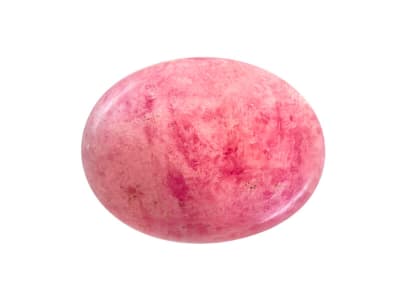Tugtupite gets its unique name from the location of its discovery in southwest Greenland. This semi-transparent to opaque mineral species is usually pink to red and often mottled with white, gray or black. Nicknamed the "Reindeer Stone," tugtupite is tenebrescent; when stored in darkness, the gem's color will fade, but returns immediately upon exposure to daylight. Among collectors, tugtupite is also prized for its luminescent properties: strong fluorescence and less commonly, phosphorescence, when the gem continues to fluoresce even after the ultraviolet light source has been removed.
General Information
Common Name
Tugtupite
Species
Tugtupite
Transparency
Translucent - Opaque
Refractive Index
1.496-1.502
Birefringence
0.006
Optic Character
Uniaxial
Optic Sign
Positive
Polariscope Reaction
Aggregate (AGG), Doubly Refractive (DR)
Fluorescence
SWUV: Inert to strong red to orange red
LWUV: Inert or red to orange red
LWUV: Inert or red to orange red
CCF Reaction
None
Pleochroism
Dichroic, moderate purplish red and orange-red
Hardness
4-4
Specific Gravity
2.300-2.580 Typical:2.360
Toughness
Poor
Luster
Vitreous, Greasy
Fracture
Conchoidal, Uneven
Cleavage
None
Chemical Name
Sodium Aluminum Beryllium Silicate Chloride
Chemical Formula
Na4AlBeSi4O12Cl
Crystal System
Tetragonal
Chemistry Classification
Silicate
Tugtupite Colors
-
 Pink
Pink -
 Red
Red
Alternate Names
Reindeer Stone
Countries of Origin
Canada; Russian Federation; Unknown; Greenland
